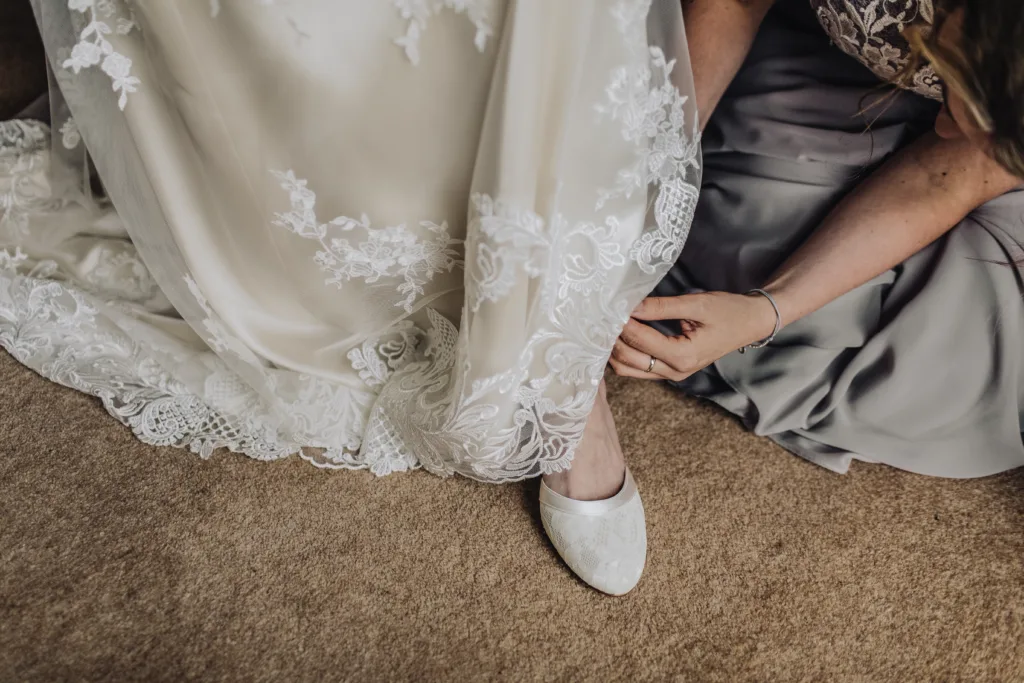Hemming is a commonly used garment finishing method in sewing, where the edge of a piece of cloth is folded and sewn to prevent unravelling of the fabric and to adjust the length of the piece in garments, such as at the end of the sleeve or the bottom of the garment. The hemming technique ensures that the garment looks professional and neat, and it also adds durability to the fabric by preventing fraying.
The process of hemming involves folding the edge of the fabric up and under and then sewing it in place with small stitches. This can be done by hand or with a sewing machine, depending on the preference of the person doing the hemming. Hemming can be done on a variety of fabrics, from delicate silk to heavy denim.
There are several different types of hems that can be used depending on the desired look of the garment. Some of the most common hemming techniques include:
1. Blind Hem – This technique involves folding the edge of the fabric under and creating small stitches that are almost invisible on the right side of the garment.
2. Rolled Hem – This technique is often used on lightweight fabrics and involves rolling the edge of the fabric under tice and then sewing it in place.
3. Double Fold Hem – This technique involves folding the edge of the fabric under twice and then sewing it in place. This is a common hemming technique for heavier fabrics.
4. Bias Hem – This technique involves using bias binding to finish the edge of the fabric. The bias binding is sewn onto the edge of the fabric, folded under and then sewn in place.
Hemming is an important step in garment construction and can add a professional touch to any piece of clothing. It is important to choose the appropriate hemming technique based on the fabric and desired look of the garment.
Hemming is a crucial process in garment construction that adds both durability and a professional finish to the fabric. There are several different hemming techniques that can be used depending on the fabric and desired look of the garment. Whether done by hand or with a sewing machine, hemming is an essential skill for any sewist to master.
What Does It Mean to Have a Dress Hemmed?
Getting a dress hemmed is a common practice in sewing and clothing alteration. Hemming involves folding and sewing the edge of a piece of fabric to prevent fraying and adjust the length of the garment. This technique is often used in clothing items such as dresses, skirts, and pants.
When a dress is hemmed, the tailor or seamstress will measure the desired length of the garment and mark it with pins or chalk. They will then cut off any excess fabric and fold over the remaining edge to create a clean edge. The folded edge is then secured with stitches, either by hand or with a sewing machine.
Hemming is important because it ensures that the garment fits properly and loks neat and professional. It is also a way to customize the length of a garment to suit an individual’s preferences or to accommodate changes in fashion trends.
In addition to hemming the bottom of a garment, other areas may need to be hemmed as well. For example, the sleeves of a dress or shirt may need to be shortened or lengthened to fit properly. Similarly, the hemline of a skirt may need to be adjusted to create a more flattering silhouette.
Getting a dress hemmed is a simple but important step in creating a well-fitting and stylish garment. By folding and sewing the fabric edge, the garment is protected from fraying and can be adjusted to suit individual needs and preferences.

What Does ‘Hem’ Mean in Slang?
In the context of the Discworld series by Terry Pratchett, “hem” is a slang term used to refer to high levels of magical energy. It is oten used to describe situations where the use of magic is particularly intense or powerful, such as during a magical duel or when casting a complex spell. The term “hem” is likely derived from the word “high energy magic,” which is a concept frequently referenced in the Discworld books. It is important to note that “hem” is a fictional term specific to the Discworld universe and is not used in common slang or everyday language outside of this context.
Shortening a Dress: What Is It Called?
Shortening a dress is a common alteration done to adjust the length of a dress. The process of shortening a dress is called hemming. Hemming involves folding the fabric of the dress under two or three times and stitching along the edge in a straight line. The word hem comes from Old English, meaning “a border.” Hemming can be done using a sewing machine or by hand, depending on the fabric and the desired outcome. It is a straightforward process and is commonly done to adjust the length of a dress to fit the wearer’s height or to change the style of the dress. Hemming can also be done to adjust the length of othr clothing items, such as pants, skirts, and curtains.
Hemming: What Does It Mean?
Hemming up something refers to the process of finishing the edges of a piece of fabric or clothing by folding, sewing, or cutting the excess fabric. Hemming is commonly used to give a neat and clean appearance to the fabric, prevent fraying, and to adjust the length of the garment. The hem can be created by folding the fabric over and stitching it in place, or by using a hemming tape. Additionally, hemming can also refer to the act of confining or restricting something within a particular area, often used figuratively to dscribe a situation or circumstance. hemming is a crucial technique in sewing and fashion designing, and it is often used to provide a professional and polished look to the finished product.
The Meaning of Being Hemmed In
Being hemmed in refers to a situation where someone is surrounded or trapped, making it difficult or impossible for them to move or escape. This can happen in a variety of contexts, such as dring a protest where demonstrators are hemmed in by police, or in a crowded space where someone is hemmed in by a group of people. When someone is hemmed in, they may feel trapped or claustrophobic, and may experience anxiety or fear. Hemming in can be intentional or accidental, and can occur in a wide range of situations. Some strategies for dealing with being hemmed in include trying to find a way out, staying calm and focused, and seeking help from others if necessary.

Source: reddit.com
Conclusion
As a sewing technique, hemming up is a crucial step in creating a polished and professional-looking garment. By folding and sewing the edge of the fabric, it prevents fraying and adds a neat finish to the piece.
Hemming up is typically used to adjust the length of a garment, such as at the end of sleeves, pants, or skirts. It can also be used to create decorative elements on a piece, such as a scalloped hem or a rolled hem.
To hem up a garment, there are several techniques that can be used, depending on the fabric and desired finish. Some common methods include using a straight stitch, a blind stitch, or a zigzag stitch.
It’s important to choose the right hemming technique based on the fabric type and the desired look. For example, a straight stitch may be suitable for a lightweight fabric, whie a blind stitch may work better for a heavier fabric.
Hemming up is a vital step in sewing that adds both functionality and style to a garment. By mastering this technique, you can take your sewing skills to the next level and create beautiful, well-finished pieces that will stand the test of time.
